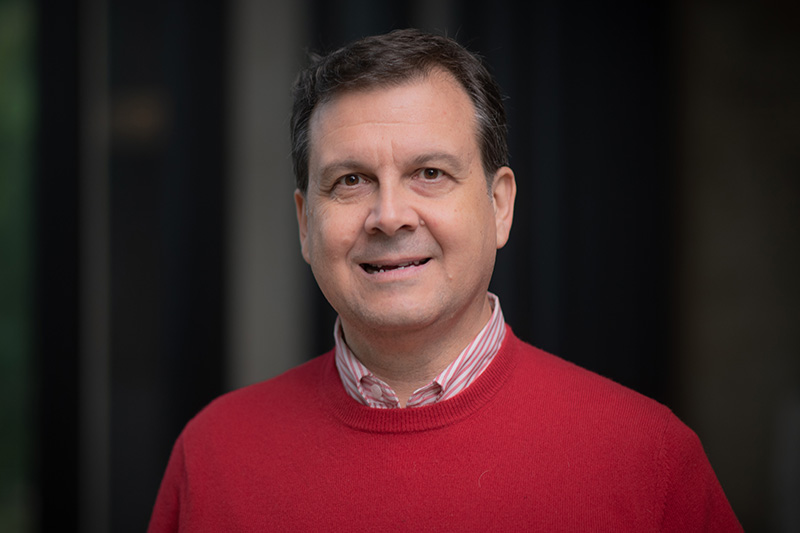By Stephen Greenwell

For Peter Vekilov, Ph.D., constantly being challenged and questioned about his scientific beliefs is all part of the process when it comes to his research and his teaching.
The John and Rebecca Moores Professor, in the William A. Brookshire Department of Chemical and Biomolecular Engineering at the Cullen College of Engineering, has even integrated it into his “rules” for his research group, which hang on the wall of his office. Several prominent ones include:
Peter is often wrong. Work harder than Peter. Shyness is harmful. Question everything.
Vekilov stressed that to him, being able to vigorously defend your scientific thought was a required part of the job, whether the questions were coming from a colleague in the field, or an undergraduate student researching with him.
“This is scientific exchange. When we talk about science, we're equal.”
That sort of inquisitive stance has led to Vekilov earning million-dollar grants, and shifting thought about how crystal formation occurs. And, it has led to him being the 2021 American Association for Crystal Growth Award recipient – only the 17th person to receive the distinction since 1978, which is only awarded on merit every two to four years.
“The first recipients of the award were very prominent scientists,” Vekilov said, outlining the history of the award. “Sir Charles Frank, an English researcher, developed the first theory of how crystals grow in the 1950s. Bob Laudise, from Bell Labs, developed the process to synthesize quartz. In your computer there are quartz crystals, in your phone there are quartz crystals, in my watch there are quartz crystals. There are quartz crystals everywhere now. I'm humbled to be in the cohort of these researchers.”
“This award recognized the work my students and postdocs had done over the years and highlighted the discoveries they had made.”
Vekilov first joined the AACG in 1993, when he came to the United States. His doctoral and postdoctoral advisors were both in the organization. For the past 15 years, he's been a member of the executive committee, and the chairman of the organizing committees for two of the national conferences.
“It's about getting new ideas, and checking my ideas against their opinions,” he said, of the continued value of the AACG to him. “Collaborations arise at these meetings, and that's the important part.”
AACGE-22 took place virtually last year in August. Vekilov served as co-chair of the event with Partha Dutta of RPI. As this year's award recipient, Vekilov gave a talk, “Two-step mechanisms of crystallization and aggregation,” prior to receiving the award.
“In the evening, my wife had flowers for me,” he said, laughing. “We've been together for 12 years, and flowers always go the opposite way. It was very nice.”
Vekilov attributed much of his success to the hard work contributed by his students and postdocs, as well as the collaborative environment for him at UH. One point of pride for him is finding job opportunities for his students. He keeps track of where his students land on his research group's page, with most finding jobs in competitive fields or at world class institutions like MIT, even before graduation.
“This is my motivation. I train them and then they get jobs. In the last 10 years, all of my graduate students got jobs before they graduated. I haven't had anyone who's had to graduate with the anxiety of staying without a paycheck.”
Vekilov was quick to praise the research environment afforded by the Cullen College of Engineering.
“In the last 12 to 13 years, our department has grown tremendously,” Vekilov said. “I collaborate with four of my colleagues in the ChBE department. Jeff Rimer and I got four proposals funded by all the major agencies: DOE, NSF and NIH, and coauthored more than 10 papers. With him and Jeremy Palmer we are finishing a very successful NFF-funded project. Jacinta Conrad and I are working on our second joint proposal. I have submitted several proposals with Navin Varadarajan, and hopefully we will get funded very soon.”
Vekilov noted that in balance he had collaborated with at least 20 percent of his department's faculty members, a high degree of cooperation. He has also worked to create research partnerships with other colleges at UH, and other universities in Texas.
“I worked together with Vassiliy Lubchenko, a professor from the Chemistry Department, for 11 years. We got three successive grants from the NSF, and we've probably published more than 35 papers on those projects.”
He added, “Being in Houston is very rewarding, because I collaborate with two theorists from the Rice Chemistry Department, Peter Wolynes and Anatoly Kolomeisky. I've known Anatoly since he was an assistant professor, and now he's the department chair. He's a very close friend. At UTMB in Galveston, I collaborate with Monte Pettitt and Michael Sherman.”
Vekilov was pleased by how UH and the Cullen College of Engineering continue to grow.
“I'm very glad by how UH has evolved in last 10 years. In the last five years, the process has been faster and faster,” he said. “We have new colleagues, we have a new building, we have a new chairman. The support we're getting from the university to further advance this department is amazing. It helps all of us, because we have better resources, and we feel more inspired to do better work.”
Learn more about Peter Vekilov and the Vekilov Research Group